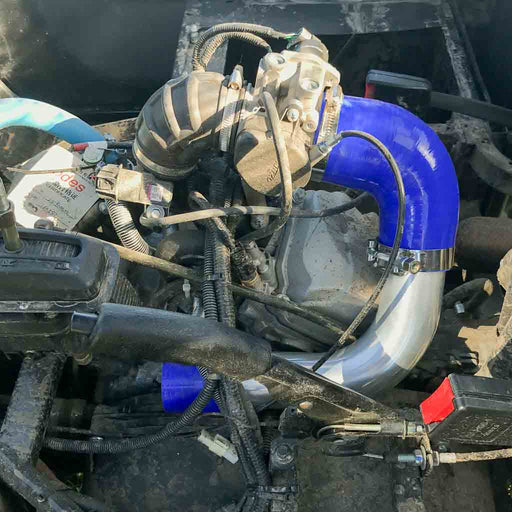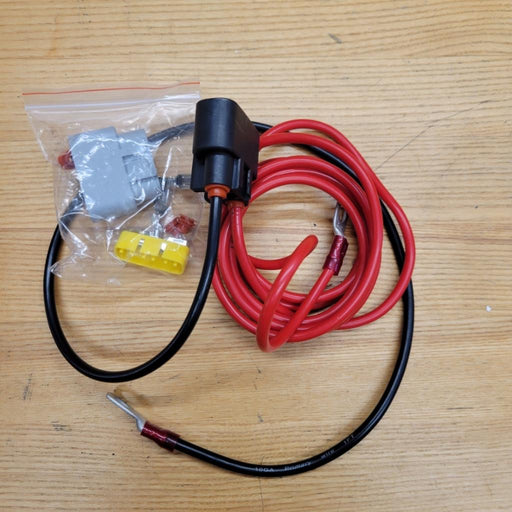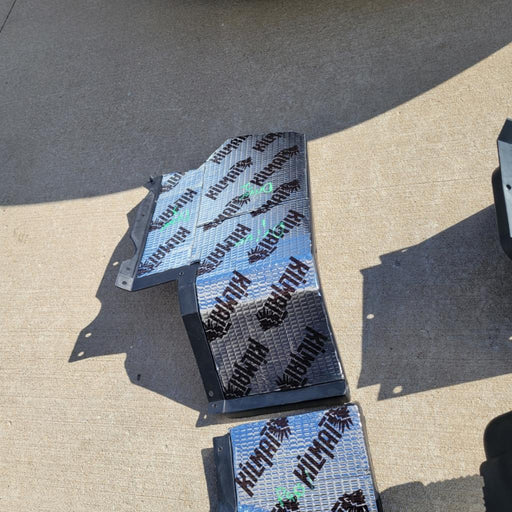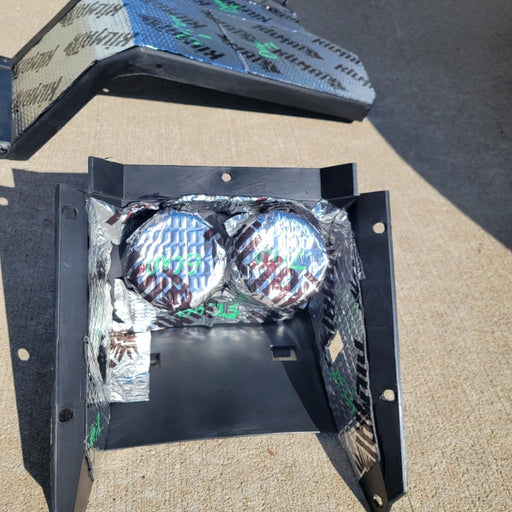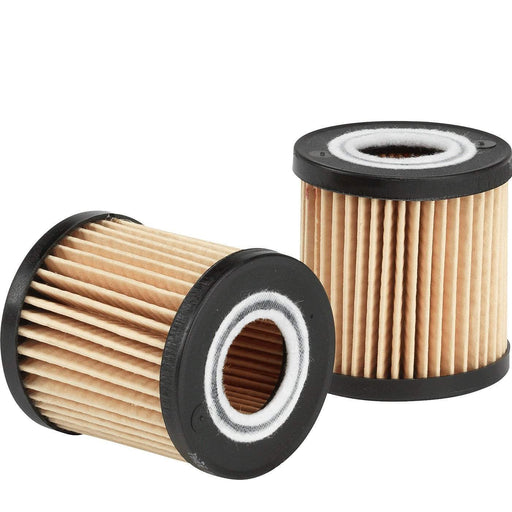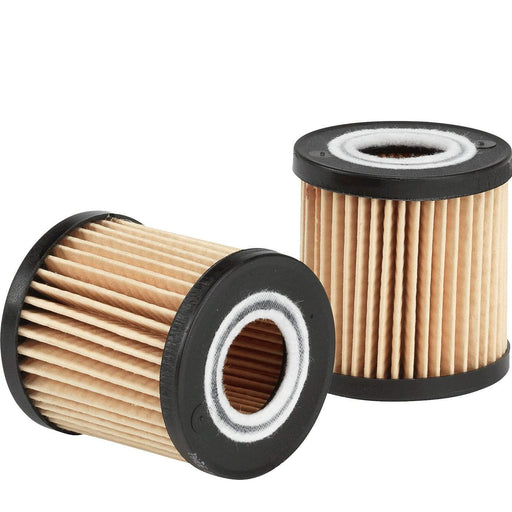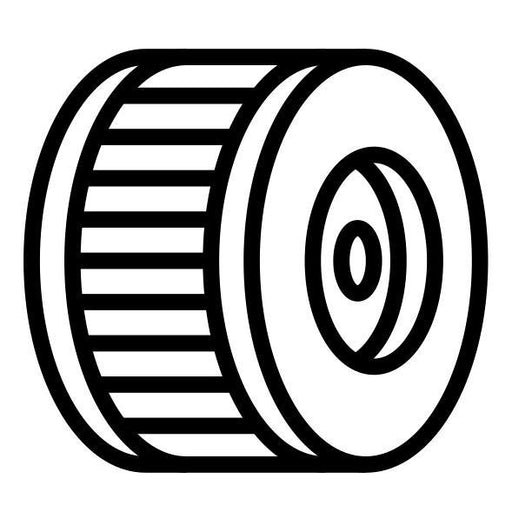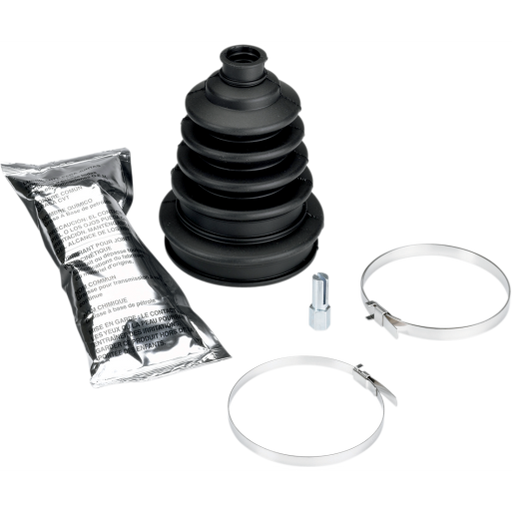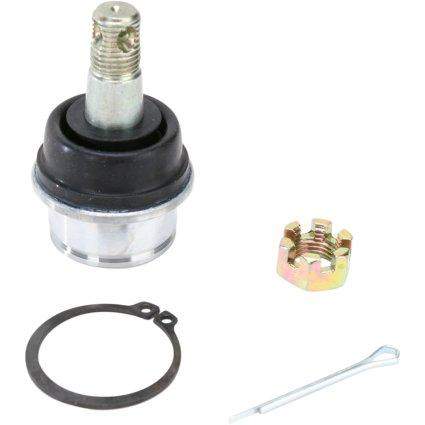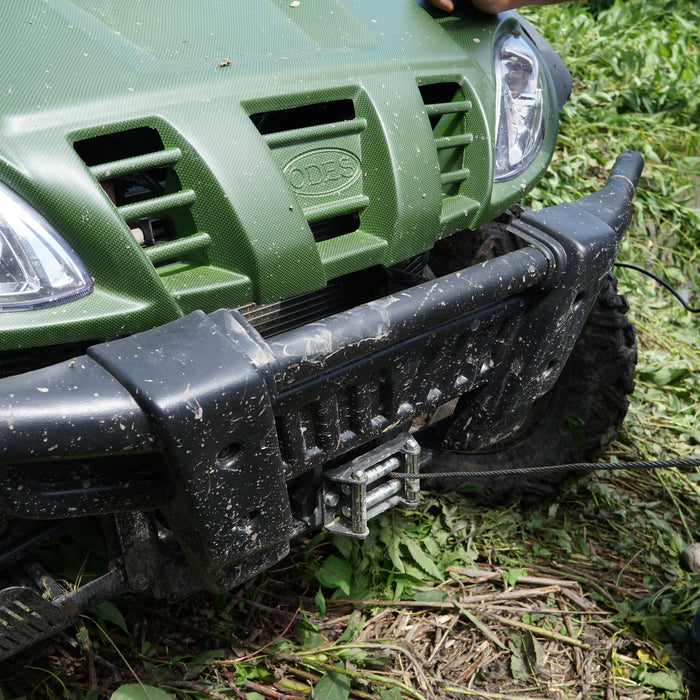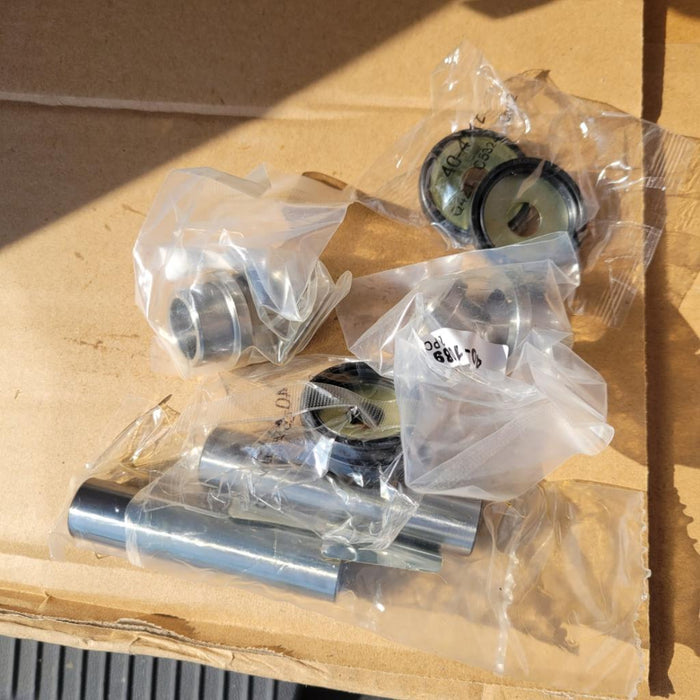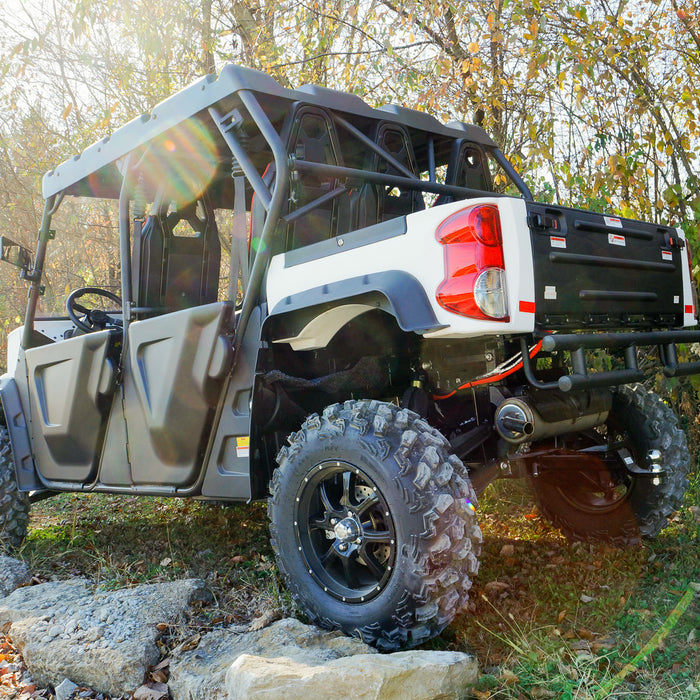
How to Store an ATV in Winter
Battery Maintenance
We've talked about battery maintenance in depth before, but if you're not planning on using your ATV through the winter (or for any length of time), properly maintaining your battery becomes even more important. The way that you approach battery maintenance in the winter will depend on your storage conditions.If you're not storing your ATV in a climate controlled environment, you'll want to pull the battery completely. If for some reason removing the battery is not an option, at the very least make sure that you are using a maintainer. We've mentioned our Battery Tender several times because it has been such a great investment. Fluctuating temperatures cause excessive battery discharge. Keeping your ATV on a maintainer through the winter will ensure that your battery is fresh and ready to go come spring.
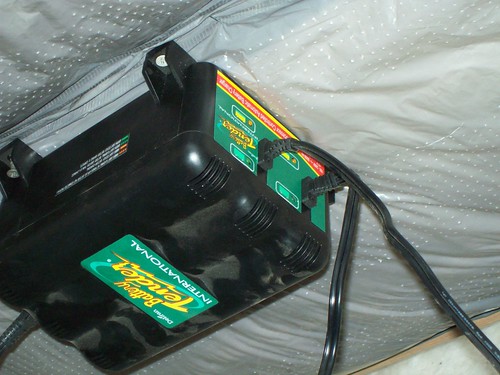 If you're planning to store your ATV in a climate controlled area (or storing the battery in a climate controlled area), a maintainer is still a great idea. But, you can certainly get by without a maintainer. Just make sure that your battery gets a good maintenance charge at least once a month. Remember, that charging at a higher amperage can cause calcification and shorts, so make sure that you're using a low trickle charge. Think 2 amps or less. For more details on amperage, this battery charge time calculator is a pretty good reference.
If you're planning to store your ATV in a climate controlled area (or storing the battery in a climate controlled area), a maintainer is still a great idea. But, you can certainly get by without a maintainer. Just make sure that your battery gets a good maintenance charge at least once a month. Remember, that charging at a higher amperage can cause calcification and shorts, so make sure that you're using a low trickle charge. Think 2 amps or less. For more details on amperage, this battery charge time calculator is a pretty good reference.
Fuel
Nowadays, fuel is highly regulated. While these regulations are great for the environment, the restrictions on manufacturers leads to a product that goes stale much quicker than it would have back when power sports started gaining traction. Since fuel can go bad so quickly, we recommend that you either drain the tank completely before storing your ATV or use a high quality fuel additive. We really like Sea Foam Motor Treatment. Because we use it ALL THE TIME, we never have to worry about draining the fuel before storage. As an added bonus, we have the peace of mind that even when we unexpectedly go weeks without using our ATVs, our fuel will still be in good shape when we're ready to ride again.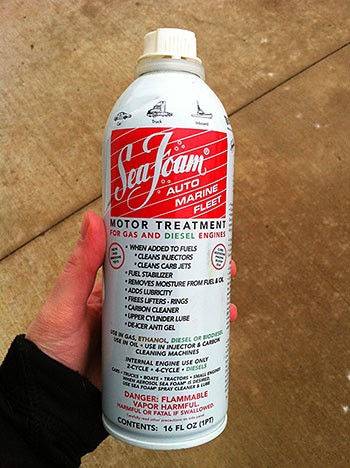
Carburetor
If you really trust you're fuel additive, you can probably leave your carburetor alone and be ok the next time you go to ride. If you're like us, you're just not that trusting. (Sorry, Sea Foam.) Stale fuel has a tendency to grow algae, which is not very much fun to clean. You may remember when we rebuilt the carburetor on our Grizzly, we found algae in the bowl. That was a nice surprise. To avoid a pleasant surprise like that one yourself, we recommend that you drain the carburetor prior to storing your ATV. There are two ways to drain a carburetor. You could do it manually by first turning the fuel off and then turning the screw in the bottom of the carburetor. Or you could just run it out naturally. To let the carburetor run out on its own, turn the fuel off and then start the ATV. Let it run until it starts to die, then turn the choke on and let the ATV run until it does finally die. This will completely empty the carburetor. If that seems like a lot of work, keep this in mind. Stale fuel smells really bad. No really, it's gross.Preventative Maintenance Checks and Services (PMCS)
One of our very first posts was on the importance of conducting PMCS. While our mind frame at the time was more in line with spring, it's just as important to check everything out in the winter as well. If you're planning on storing your ATV for the winter, we suggest that you go over it with a fine tooth comb prior to storage. Walk end to end and make sure nothing is damaged. If you find that you need to buy a lot parts, winter storage is a great time to space out purchases. It's a little easier financially to order new axles and tie rod ends in several purchases over a few months than it is to make one large purchase. --- If it's not actually easier, at least it stings less than seeing the one large bill.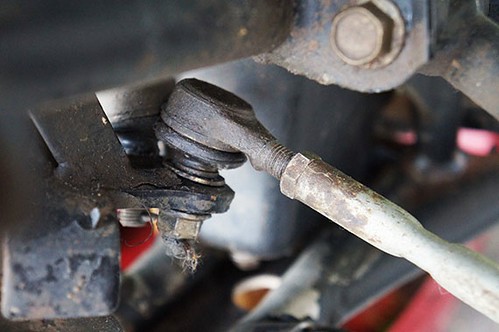
Antifreeze Check
And finally, if your ATV is going to be sitting outside (or in a shed or barn with no heat), it's a good idea to check the antifreeze lately. While it's not common to replace it often, it's worth the peace of mind to check it out anyway. You know, for those times that you let your buddy borrow your ATV and he didn't tell you it was low. Or when you blew a hose last summer and just threw water back in the radiator because you were on the trail and it was handy. (Not that we've ever done that one.)Prepping your ATV for storage may sound like a lot of work, but if you do right, it will pay off huge in the spring. Over the last few years, we've found that one of the best ways to ensure that we have more time to ride is to make sure our equipment is ready when we are. On the first warm day when there's mud on the ground and you're excited to ride, the LAST thing you'll want to do is buy a new battery or drain stale fuel.
-
Original price $ 159.99 - Original price $ 204.99Original price$ 159.99 - $ 204.99$ 159.99 - $ 204.99Current price $ 159.99
Air Filter Relocation Kit for ODES UTVS
Scooter's PowersportsIn stockOur very own Air Filter Relocation kit for ODES UTVS. Designed and manufactured by Scooter's Powersports. Unlike some ODES Air Filter Relocation K...
View full detailsOriginal price $ 159.99 - Original price $ 204.99Original price$ 159.99 - $ 204.99$ 159.99 - $ 204.99Current price $ 159.99 -
Original price $ 40.00 - Original price $ 40.00Original price$ 40.00$ 40.00 - $ 40.00Current price $ 40.00
Voltage Regulator Relocation Kit for ODES UTVS
Scooter's PowersportsDesigned to move the voltage regulator from under the hood to under the seat. Requested by you and built by Scooter's Powersports. Allows for elimi...
View full detailsOriginal price $ 40.00 - Original price $ 40.00Original price$ 40.00$ 40.00 - $ 40.00Current price $ 40.00 -
Original price $ 129.99 - Original price $ 159.99Original price$ 129.99 - $ 159.99$ 129.99 - $ 159.99Current price $ 129.99
Pre-Cut Sound Proof Matting for ODES UTVS
Scooter's PowersportsIf the noise inside the cab of your ODES UTV has ever bothered you, this. is your solution. Now you can get one of our best selling shop services a...
View full detailsOriginal price $ 129.99 - Original price $ 159.99Original price$ 129.99 - $ 159.99$ 129.99 - $ 159.99Current price $ 129.99 -
 View all ODES UTV Performance mods
View all ODES UTV Performance mods
-
 ODES UTVS best sellers
ODES UTVS best sellers -
Original price $ 38.49 - Original price $ 55.99Original price$ 38.49 - $ 55.99$ 38.49 - $ 55.99Current price $ 38.49
ODES Oil Change Kit for 800 and 1000 Engines
Scooter's PowersportsODES Industries recommends an engine oil change at 25-hours of run time or 1000 miles. (We won’t tell if you turn that down to once every 50-hours ...
View full detailsOriginal price $ 38.49 - Original price $ 55.99Original price$ 38.49 - $ 55.99$ 38.49 - $ 55.99Current price $ 38.49 -
Original price $ 7.99 - Original price $ 7.99Original price$ 7.99$ 7.99 - $ 7.99Current price $ 7.99
ODES Oil Filter - High-Performance
Not specifiedHigh-performance aftermarket ODES oil filter. Compatible with 800cc and 1000cc ODES engines. Be sure to select your make and model before adding to...
View full detailsOriginal price $ 7.99 - Original price $ 7.99Original price$ 7.99$ 7.99 - $ 7.99Current price $ 7.99 -
Original price $ 49.99 - Original price $ 62.00Original price$ 49.99 - $ 62.00$ 49.99 - $ 62.00Current price $ 49.99
Pivot Works Wheel Bearing Kit for ODES - Lifetime Replacement!
Pivot WorksIn stockPivot Works wheel bearing kit for 2012+ 800cc and 1000cc UTVs from ODES Industries. Fitment includes the Short Travel (Standard) suspension and the...
View full detailsOriginal price $ 49.99 - Original price $ 62.00Original price$ 49.99 - $ 62.00$ 49.99 - $ 62.00Current price $ 49.99 -
Original price $ 159.99 - Original price $ 204.99Original price$ 159.99 - $ 204.99$ 159.99 - $ 204.99Current price $ 159.99
Air Filter Relocation Kit for ODES UTVS
Scooter's PowersportsIn stockOur very own Air Filter Relocation kit for ODES UTVS. Designed and manufactured by Scooter's Powersports. Unlike some ODES Air Filter Relocation K...
View full detailsOriginal price $ 159.99 - Original price $ 204.99Original price$ 159.99 - $ 204.99$ 159.99 - $ 204.99Current price $ 159.99 -
Original price $ 40.99Original price $ 40.99 - Original price $ 40.99Original price $ 40.99Current price $ 36.95$ 36.95 - $ 36.95Current price $ 36.95
ODES 800cc Air Filter | 21040401001
ODES IndustriesOut of stockOEM air filter for ODES 800cc engines. Vehicle Fitment This part is compatible with the following vehicles 2012+ ODES Dominator 800 2015+ ODES Dom...
View full detailsOriginal price $ 40.99Original price $ 40.99 - Original price $ 40.99Original price $ 40.99Current price $ 36.95$ 36.95 - $ 36.95Current price $ 36.95Sold out -
Original price $ 18.99 - Original price $ 18.99Original price$ 18.99$ 18.99 - $ 18.99Current price $ 18.99
Fast Boot Kit
MooseIn stockExtremely heavy duty CV boot that fits virtually all ATVs and UTVs. Additional rib to allow boot to expand for larger joints Improved clamp retain...
View full detailsOriginal price $ 18.99 - Original price $ 18.99Original price$ 18.99$ 18.99 - $ 18.99Current price $ 18.99 -
Original price $ 29.99 - Original price $ 29.99Original price$ 29.99$ 29.99 - $ 29.99Current price $ 29.99
ODES Ball Joint Kit
Scooter's PowersportsODES ball joint kit for 800cc and 1000cc ODES UTVs. ODES Ball Joint Kit Includes (1) Ball joint (1) Circlip (1) Cotter pin (1) Nut Each kit provi...
View full detailsOriginal price $ 29.99 - Original price $ 29.99Original price$ 29.99$ 29.99 - $ 29.99Current price $ 29.99


